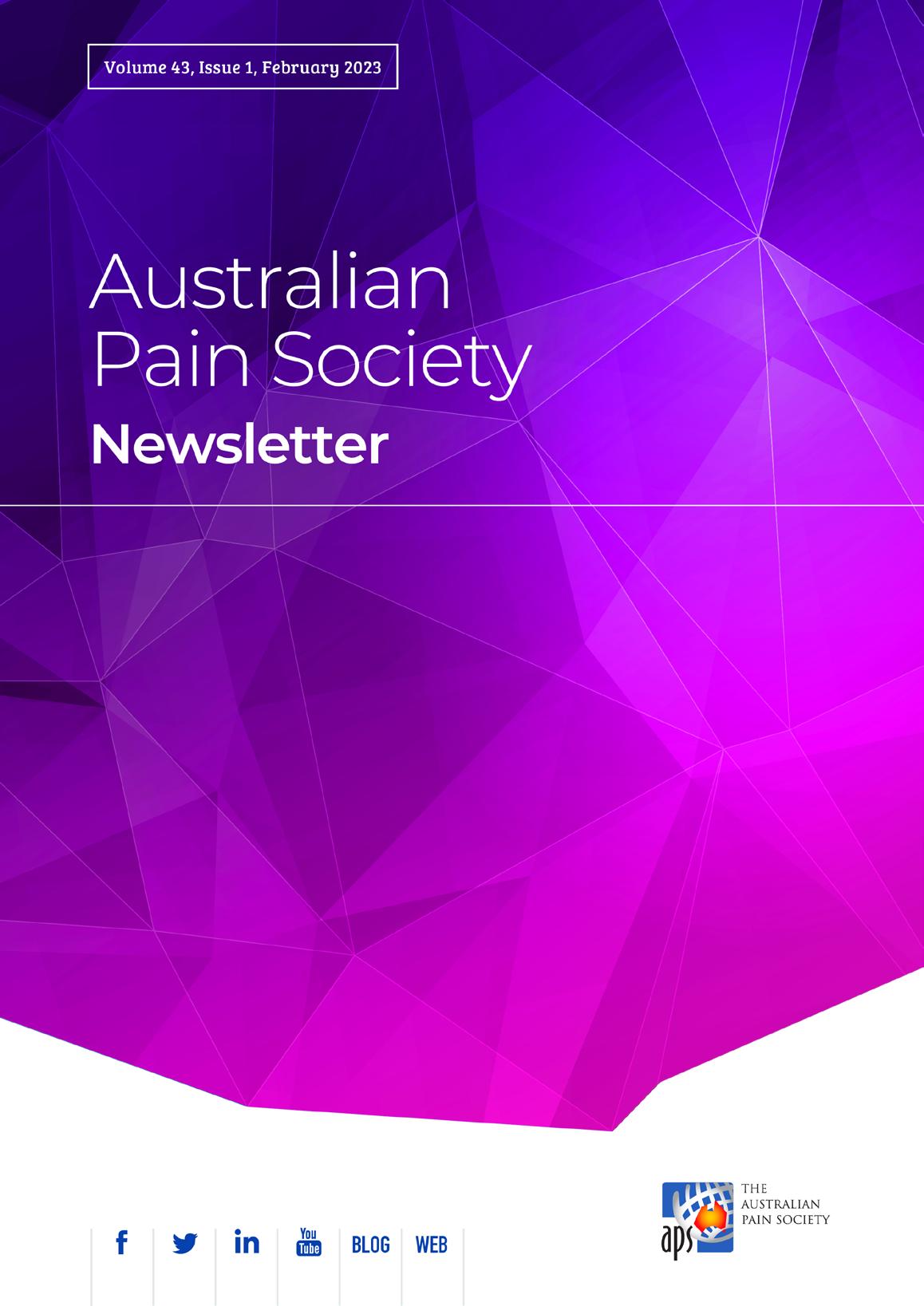 Joanne Harmon
Joanne Harmon

Welcome to 2023, the IASP Global Year of Integrative Pain Care. This year is a focus on the special aspects of pain and to increase awareness within the pain community and beyond. The aim of this year’s campaign is to increase the awareness of clinicians, scientists, and the public about the use of an integrative pain care approach, which emphasises nondrug, self-management care.
For those who were able to take a break, I hope you had a safe and enjoyable holiday period with your family and loved ones. Like many of us, I am keen to see the back of 2022 and it is hard to believe it’s February already.
With the new year please ensure you check out all the upcoming events we have listed in this edition. Early Bird registration for the 2023 Australian Pain Society 43rd Annual Scientific Meeting (02-05 April 2023) is still available. Get your late breaking abstracts in! So go on, submit your work, and take up the opportunities for connecting with renowned experts and enjoy 18 clinical and research topical sessions. There is a great line up of international and national speakers, and there are plenty of topical sessions. The conference program has been released. Even better is the session on picking the brains of a pain researcher, this is a golden opportunity to network with some of the top researchers in pain and increase your confidence in undertaking research by asking tricky questions.
Collaboration within the pain community is the theme of this newsletter. Starting with the APS social networking event in Victoria at the Abory Afloat on Thursday 16 February 2023. Nothing like hanging out on the mighty Yarra river and catching up on what is happening in your state. If you are thinking about what happens when people collaborate, then check
out the painSTAR delegate reports on how after attending they are thinking in more strategic ways, developing new projects and gaining mentorship. Just like the one piece of advice from our ‘Meet a Member’ Spotlight on Dr Cindy Wall, who challenges us to explore and collaborate in different areas that are less familiar for us, as typically, these opportunities are incredibly rewarding.
We have a lot of juicy research articles to share with you all this edition. In fact, we have your ‘I must read more research articles’ new year’s resolution sorted. It is great to see the range of research design and methods being used by our members in exploration of pain. The two systemic reviews are fantastic examples of the importance of undertaking a research synthesis. Furthermore, the diversity of work we are showcasing in this edition is impressive. We have abstracts and links to studies ranging from a qualitative ethnographic study, a cross sectional survey study, prospective 2 group parallel 1:1 randomised feasibility trial and a mixed methods study. The diversity of how, as pain researchers, we continue to unpack and explore our evidence base is truly remarkable. So, sit back, relax and download a research paper, they are all really engrossing reading. Make it your own year of integrative pain care by keeping on sharing with us your latest publications and reviews. Looking forward to seeing this year unfold and sharing with you all new developments and research about pain. Have a safe and enjoyable holiday period – I look forward to seeing all of you in 2023.
Kind regards Dr Joanne Harmon
Editor’s Note 3 Australian Pain Society Newsletter Volume 43, Issue 1, February 2023
2 Australian Pain Society Newsletter Volume 43, Issue 1, February 2023 Editor’s Note 3 ASM 2023 4 APS Social Networking Events 12 APS 2023 Scholar Position 13 painSTAR 2022 14 Member’s Spotlight 17 2023 Global Year 18 ARA Abstract Submissions / WLA Scholarship 20 Recent Publications 21 New eBook 29 Events 30 FYI 33 New Members 34 Member Survey 35 Membership Renewals 2023 36 Calendar of Events 37 Vision, Purpose & Priorities 39 APS Directors 40 Office Bearers 41
Contents Editor’s Note
Contents
Convenor’s Message
Have you registered for the 2023 Annual Scientific Meeting in Canberra? With record numbers already registered, don’t miss out on your opportunity to be involved in Australia’s only conference offering multidisciplinary insights into the complex nature of pain management from a variety of medical, nursing, research and allied health perspectives.
The Australian Pain Society’s Scientific Program Committee has put together a fabulous programme for the Annual Scientific Meeting and what better venue than the national meeting place, Canberra, home to the Ngunnawal and Ngambri nations, and host to a range of national galleries and attractions, scenic bush and wildlife and packed with great restaurants and cafes.
Our overseas invited speakers, Professor Theodore (Ted) Price from University of Texas and Dr Melanie Noel, University of Calgary, are truly sensational - experts in their fields and great communicators. Both hold a variety of key positions, have won many prestigious awards and have impressive publication records. Professor Price will explore cuttingedge research into nociceptors and the dorsal horn and the potential therapeutic targets resulting from this, while Dr Noel will share her passion, research and expertise in childhood pain.
They are supported by a dazzling array of local speakers to deliver a challenging and engaging series of plenary lectures. These will be a real highlight for me: deepening my knowledge of pain by listening to our local stars whose work and insights I have appreciated previously and the opportunity to explore the work of others I am not yet familiar with, selected for excellence by a knowledgeable scientific committee.
Personally, I am really looking forward to hearing from Dr Michelle Harris, who is presenting this year’s IASP Global Year Named Lecture on The Person not the Pain: Integrative Pain Care in the Acute Setting, this should be an excellent reminder around the importance of integrational and a holistic approach in pain management.
I’m also excited for the Panel on Monday afternoon on pain in the media. Titled Navigating ‘pain in the media’ from the perspectives of a journo, a researcher, and a social media guru, we are lucky to be joined by Professor Giandomenico Ianetti (University College London) who will be sharing his experiences of pain media challenges, discussing a recent situation where his research was misrepresented and used as evidence to support revocation of Roe vs Wade in the USA. With plenty of time for questions, this should be a really interactive and compelling hour.
I could go on, but I’m afraid I’ll take up the entire newsletter! Please visit the conference website for a full program.
Don’t miss out on the 18 topical sessions on offer, enabling a diverse range of topics to be explored in depth. The biggest dilemma will be choosing which ones to attend, the topics and speakers are all really impressive. Will I deepen my knowledge in my domain of expertise or
take the opportunity to delve into a lateral field? Do I discover cutting edge research with optogenetics and light therapy, how ketamine is being used in returned soldiers, an update on best-practice for opioids? The sessions on exercise and movement, long covid and epidemiological considerations, social interventions … the list goes on.
Also included in the program, the Trainee Session – ask expert pain researchers questions you’ve always wanted to know the answers too in this casual and practical hour on Monday afternoon, the return of the popular Rapid Communication Session, six Free Paper Sessions and six Pre-Conference Workshops.
As a true multidisciplinary meeting, there are great opportunities to engage with experts in a diverse range of fields: the fundamental sciences, interventional pain management, psychology, nursing, physiotherapy, pharmacy, occupational therapy and sleep, mentoring communication, insights for digital and online management, and some great paediatric focus sessions.
The social programme presents great opportunities to reconnect with old friends and make new ones. The Welcome Reception on the Sunday evening is always a fantastic opportunity to kick start your conference experience. We expect a full dance floor at the Gala Dinner on Tuesday night so make sure you pack your dancing shoes! Lastly, I will be hosting a 40 minute run on Monday and Tuesday morning around Lake Burley Griffith –it will be a beautiful way to start the day and I do hope you join me.
Conveniently, APS 2023 runs right into the Easter Weekend so for those not rushing off, why not join some new friends for a wine tasting at Mount Majura Vineyard on the Wednesday afternoon.
Canberra is called the bush capital for a reason and is surrounded by readily accessible trails for walking, cycling and mountain biking for those wanting to get outdoors.


So come join us, be challenged, be stimulated and have a great time in this great place. Looking forward to seeing you there.
Dr Andrew Watson LOC Convenor & ACT Director

4 Australian Pain Society Newsletter Volume 43, Issue 1, February 2023 5 Australian Pain Society Newsletter Volume 43, Issue 1, February 2023 ASM 2023
ASM 2023
Register before 21 February 2023 for Early Bird savings
Get in early and secure your place at Australia’s only multidisciplinary conference offering insights into the complex nature of pain management from a variety of medical, nursing, research and allied health perspectives.


To register please click here
Considering the benefits of your membership? Save on your APS 2023 registration fee!
Early Bird 21 February 2023
Late Breaking Abstract Call
Did you miss your chance to submit your abstract for inclusion at APS 2023 in Canberra? Finalised your research only after the original abstract deadline?
If yes, don’t despair!
This late breaking research call is your last opportunity to submit an abstract for the 2023 conference!
Take up this opportunity and have your work featured as a poster presentation at the only multidisciplinary conference in Australia offering insights into the complex nature of pain management from a variety of medical, nursing, research and allied health perspectives.
Abstracts can be submitted between Tuesday 31 January – Tuesday 7 February 2023.
Non-Member Registration Price VS
Becoming an APS Member
APS Student Member Registration Price
$1,295 OR Being a member saves you up to $280 after membership fees!
Only $275 Being a member saves you $955 after membership fees!
Tell your colleagues who are interested in becoming members so they can save on their registrations too!
Become an APS Member here
Should you have any queries about the conference, please contact the Conference Secretariat.
We look forward to welcoming you to Canberra, ACT!
All accepted authors must register for the conference by the early bird deadline of Tuesday 21 February 2023.
Connect with renowned experts and hear them speak about new advances in pain management.
Enjoy 18 clinical and research topical sessions
Attend the Trainee Session to receive practical tips about building your career in pain research.
Be a part of the future of pain science and management!
For further information please visit the conference website.
Should you have any queries regarding your submission or the process, please contact the Conference Secretariat.
We look forward to receiving your submissions.
7 6 Australian Pain Society Newsletter Volume 43, Issue 1, February 2023 Australian Pain Society Newsletter Volume 43, Issue 1, February 2023 ASM 2023
ASM 2023
Conference Program
You’ll enjoy an extensive program including pre-conference workshops, international keynote speakers, national speakers and topical sessions.
Join the many other professionals that are involved with pain and pain management and learn with clinicians and researchers across many different aspects of pain management.


Leave the conference enabled to make that difference in your sphere of work.
Register Now!
Plan your conference experience today.
Program Overview
Keynote Speakers
Pre-Conference Workshops
Discipline Sub-Group Meetings
Topical Sessions
Pain in the Media
Social Program
Trainee Session
For further information please visit the conference website.
Should you have any queries about the conference, please contact the Conference Secretariat.
We look forward to welcoming you to Canberra, ACT!
Trainee Session
Pick the Brain of a Pain Researcher!
Have you ever wanted to ask a well-known researcher –
“How did you know this was for you?”
“How did you know what opportunities to say yes to and what to say no to?”
If you have wanted to ask, now is your chance!
This session is for higher degree and early career researchers (HDRs & ECRs) as well as those who are considering research careers in the future and includes networking opportunities with a number of the plenary speakers.
Professor Ian Harris, University of NSW, NSW
Professor Denise Harrison, University of Melbourne, VIC
Professor Richelle Myschasiuk, Monash University, VIC
Dr Melanie Noel, University of Calgary, Canada
Professor Theodore Price, University of Texas, USA
Date: Monday 03 April 2023
Time: 5:30pm - 6:30pm
Cost: $10 per person, includes a drink on arrival
When registering for the conference, don’t forget to add in a ticket to the Trainee Session! To register click here.
9 8 Australian Pain Society Newsletter Volume 43, Issue 1, February 2023 Australian Pain Society Newsletter Volume 43, Issue 1, February 2023 ASM 2023 ASM 2023
2023 AUSTRALIAN PAIN SOCIETY
43RD ANNUAL SCIENTIFIC MEETING
In the IASP Global Year for Integrative Pain Care
PAIN IN CHILDHOOD PRE-CONFERENCE WORKSHOP
8.30am – 12.30pm, Sunday 2 April 2023 National Convention Centre Canberra, ACT
Registration Fees starting from $160 Workshop Overview
This workshop will explore the use of lignocaine infusions in acute and chronic pain conditions, discussion and findings from the recent RAPID study – looking at the effectiveness and adverse effects of medications used in palliative care and pain management.
Finally, enjoy a deep dive into chronic lower limb pain conditions in children and adolescents. Join researchers for an interactive session as they develop guidelines and priorities for this condition.
For further information, visit: www.dcconferences.com.au/aps2023
Questions? Please email us at apsasm@dcconferences.com.au
ACUTE PAIN PRE-CONFERENCE WORKSHOP


43RD ANNUAL SCIENTIFIC MEETING
In the IASP Global Year for Integrative Pain Care
8.30am – 5.00pm, Sunday 2 April 2023
National Convention Centre Canberra, ACT
Registration Fees starting from $160
Workshop Overview
Join us in this broad-based workshop to suit all knowledge levels and a variety of specialist areas with a multi-disciplinary focus in the field of Acute Pain Management. The aim is to share information, evidence, and our experiences with a focus on a pragmatic approach to optimise our practice. Issues pertinent to today’s challenges will be presented with opportunities to discuss and propose solutions to our greatest problems. It will help update our core knowledge, as well as find ways to move forward in this constantly challenging ad vital area of medical care.
For further information, visit: www.dcconferences.com.au/aps2023
Questions? Please email us at apsasm@dcconferences.com.au
FUNDAMENTALS OF PAIN PRE-CONFERENCE WORKSHOP
8.30am – 12.30pm, Sunday 2 April 2023
National Convention Centre Canberra, ACT
Registration Fees starting from $160
Workshop Overview
The Foundations of Pain pre-conference workshop is a succinct overview of the physiology, clinical assessment, and clinical management of pain. The workshop is aimed at the general practitioner, specialist, allied health clinician or psychologist looking for an introduction to, or update on, persistent pain management.
This workshop is grounded in a biopsychosocial understanding of pain mechanisms and developing a mechanism-based approach to pain assessment and management. This workshop will compliment those with an interest in attending an afternoon session of pharmacology, acute pain or physiotherapy topics.
For further information, visit: www.dcconferences.com.au/aps2023
Questions? Please email us at apsasm@dcconferences.com.au
BASIC PAIN RESEARCH PRE-CONFERENCE WORKSHOP
2023 AUSTRALIAN PAIN SOCIETY 43RD ANNUAL SCIENTIFIC MEETING
In the IASP Global Year for Integrative Pain Care
11.00am – 5.00pm, Sunday 2 April 2023 National Convention Centre Canberra, ACT
Registration Fees starting from $160
This workshop will showcase the latest in Australian basic pain research from early career and senior researchers, and provide a forum to discuss mechanisms of nociception and pain across all levels of investigation: from molecular and cellular analyses, to studies in animals and humans (pre-clinical or clinical).
The workshop is open to all interested in mechanisms of nociception and pain, including basic and clinical researchers, health professionals and students at all levels.
For further information, visit: www.dcconferences.com.au/aps2023
Questions? Please email us at apsasm@dcconferences.com.au
2023 AUSTRALIAN PAIN SOCIETY 43RD ANNUAL SCIENTIFIC MEETING






In the IASP Global Year for Integrative Pain Care
PHYSIOTHERAPY IN PAIN MANAGEMENT PRE-CONFERENCE WORKSHOP
STRESSMODEX: CLINICAL APPLICATIONS & TRAINING
1. 30pm – 5.00pm, Sunday 2 A pr l 20 23 N a t on al Convention Centre Canber ra ACT
R e gi stration Fees starting fro m $16 0
Workshop Overview
StressModex is an integrated psychological and exercise treatment approach targeting stress and pain after injury, and can be applied to all acute and chronic pain conditions.
This highly practical workshop will provide training in the specific skills involved in StressModex.
For further information, visit: www.dcconferences.com.au/aps2023
Questions? Please email us at apsasm@dcconferences.com.au
PHARMACOLOGY IN PAIN MANAGEMENT PRE-CONFERENCE WORKSHOP
1.30pm – 5.00pm, Sunday 2 April 2023
National Convention Centre Canberra, ACT
Registration Fees starting from $160
This interactive workshop embraces the IASP Global Year Campaign for Integrative Pain Care and pharmacology by exploring the role of analgesic adjuvants, including emerging possibilities through the use of unusual suspects such as low dose naltrexone and the NMDA effects of memantine. We will explore the complex interplay of genetic variation in pharmacokinetic and pharmacodynamic pathways affecting opioid efficacy, and discuss the challenges opioid weaning and appropriate strategies through opioid substitution. We will also take a fascinating look at how food can be medicine and where dietitians play a vital role in pain management and its application in clinical practice. There will be opportunities for questions and networking with peers, so that current evidence-based knowledge can be optimised and translated in everyday practice.
For further information, visit: www.dcconferences.com.au/aps2023
Questions? Please email us at apsasm@dcconferences.com.au
10 Australian Pain Society Newsletter Volume 43, Issue 1, February 2023 ASM 2023 ASM 2023 11 Australian Pain Society Newsletter Volume 43, Issue 1, February 2023
2023 AUSTRALIAN PAIN SOCIETY 43RD ANNUAL SCIENTIFIC MEETING In the IASP Global Year for Integrative Pain Care
2023 AUSTRALIAN PAIN SOCIETY 43RD ANNUAL SCIENTIFIC MEETING
In the IASP Global Year for Integrative Pain Care
2023 AUSTRALIAN PAIN SOCIETY
APS Social Networking Events
Please join us in VIC & SA for your local Australian Pain Society (APS) social event!
VICTORIA: Join us at Arbory Afloat
SOUTH AUSTRALIA
We are combining our South Australian social networking event with the FPM South Australian CME meeting “Facing challenges of atypical facial pain” presented by Dr Meredith Daff, Dr Han Lim and Dr Andrew Zacest.
There will be a short talk preceded and followed by drinks and nibbles and a chance to chat and network. Come along and catch up with your local APS colleagues and learn more about what other people are doing in your state.
SPC SCHOLAR POSITION
Now Open!
Deadline: 11.59pm AEDT, Tuesday 28 February 2023
Come and along and catch up with your local APS colleagues and learn more about what other people are doing in your state.
In fact, if you have friends/colleagues with an interest in pain management but who are not members of the APS, why not bring them along too, so they can connect with the APS community and find out more about how the APS can help support them.
The night will be largely unstructured so that you can focus on meeting and connecting with others.
Hope to see you there!
Esther Dube and Laura Prendergast
APS Victorian Director and APS Treasurer
Date: Thursday 16 February, 2023
Time: 5.30-7.30pm
Venue: Arbory Afloat, 2 Flinders Walk, Melbourne (Note: this is not the original Arbory but is nearby on the Yarra River, by Flinders Street Station).

Click here to RSVP!
In fact, if you have friends/colleagues with an interest in pain management but who are not members of the APS, why not bring them along too, so they can connect with the APS community and find out more about how the APS can help support them.
Hope to see you there!
Michelle Harris APS South Australian Director
Date: Monday 27 February, 2023
Time: 7.00-8.30pm
Venue: ANZCA SA Regional Office – 168 Ward Street, North Adelaide
Click here to RSVP!
For non-ANZCA members please email mgully@anzca.edu.au to register.
The scholar position on the Australian Pain Society’s Scientific Program Committee will seek to provide an opportunity for high calibre APS trainees to participate in the committee for a fixed term appointment of 12-months (April 2023 - April 2024), with the potential opportunity to then be invited to become a permanent member of the SPC.
Through active participation in a range of SPC activities the appointee will contribute to the planning of the Annual Scientific Meeting, and they will gain invaluable experiences and skills with mentorship from senior pain researchers and clinicians on the SPC. The scholar appointee will no doubt find that this experience puts them in very good stead for a strong future career in pain research.
Applicants must be a PhD student who has reached their confirmation milestone and is an APS member.
Duties
• Participate in regular SPC meetings, held every 4 – 6 weeks on Tuesday afternoons
• Review free paper and topical workshop abstracts under the mentorship of a full SPC committee member.
Application Process
For further information on the application process please visit the conference website
Conditions of Appointment
• The appointment is for 12-months duration from one ASM to the next (April - April)
• The appointee must have passed their confirmation of candidature
• The appointee must have the support of their primary supervisor
• The appointee must abide by the SPC guidelines and are required to attend >80% of the SPC meetings
• The appointee will attend a face-to-face meeting on Sunday 02 April at APS 2023 in Canberra

We look forward to receiving your application!
If you have any questions, please contact the APS Conference Manager, Alex Robertson
Olympic worthy shot!
12 Australian Pain Society Newsletter Volume 43, Issue 1, February 2023 APS Social Networking Events 13 Australian Pain Society Newsletter Volume 43, Issue 1, February 2023 APS 2023 Scholar Position
painSTAR Delegate Report
Author: John Baranoff
John is a psychologist with approximately 20 years of experience as a clinician. Early in 2022, John started as a lecturer in the School of Psychology at The University of Adelaide. As a registered psychologist, John holds endorsement in clinical, health and sport psychology.

painSTAR Report:
My goals for attending painSTAR were informed by a recent career change. I am in the first year in an academic role and so when applying to attend I was thinking about how I might develop new skills and build on existing ones, as well as make new connections. My previous experience as a clinicianresearcher across pain, sport and rehabilitation psychology had led me to look at developing research questions that largely arose out of issues identified in clinical practice. My specific goals for attending painSTAR included wanting to align my own research, supervision of research and teaching with contemporary understandings of pain in ways that help others and are relevant to the field more broadly. I was hoping to be inspired by what other more experienced researchers are doing and how they have approached the study of pain in their careers.
Some of the highlights of painSTAR were hearing the painSTAR faculty, as leaders in the field, talk about their work and how they have approached the study of pain across their careers. The breadth of topics was outstanding and we heard about basic science research to population level research, as well as practice, lived experience and many other areas. The presentations by Professor Mark Hutchison and Associate Professor Tasha Stanton on research communication were aligned with the goals for my participant in painSTAR.
Perhaps something I hadn’t expected was that the faculty were so very generous in sharing valuable information about their careers and what they had experienced along the way. In the presentation by faculty, there were many examples of approaches that are likely to be helpful when faced with particular challenges in conducting pain research. This level of self-disclosure and commentary really helped put context around some of the processes of pain research and helped me understand some of the gaps in my own practice, as well as
presented new ways to think about similar issues I had experienced. Professor Michele Stirling spoke about the prevention of chronic pain after injury and in so doing covered the findings in the field over time, as well as her experience of conducting research following a career as a clinician. Professor Paul Rolan’s presentation on interaction with industry helped me to reconceptualise the benefits of engagement with industry in the process of conducting research. Associate Professor Anne Burke’s presentation also made me think about how to use health system data and Associate Professor Amy Reynolds’ presentation on the patient experience of pain brought into clear focus why research in this area is important, as well as highlighted thoughtprovoking concepts relating to conducting research with people experiencing pain.
I enjoyed talking to other participants about their work and their careers and this included hearing about their plans for the future. The size of the group really allowed an opportunity to talk to people on an individual level in an effective and meaningful way. The group activities facilitated teamwork/working with others that fostered a sense of connection and helped me understand what may be required to do more collaborative and interdisciplinary research in the pain field in the future.
Participation in painSTAR has led me to start thinking in more strategic ways about how I plan out projects when I offer research supervision to students and when planning my own research. It has also helped me understand the variety of ways of collaborating with others who might, for example, have complementary skills. It has also assisted me to work on articulating a clearer vision about the types of pain-related research questions I might pursue in the future. A substantial amount of work has clearly gone into the planning and delivery of painSTAR. From the participant perspective it was a very valuable experience and I look forward to seeing how fellow attendees and I use the experience to foster growth, in numerous forms, that is of benefit to the field.
Declaration
The author has nothing to declare.
painSTAR Delegate Report
Author:
Dr Colleen Johnston-Devin
Colleen is an academic at CQUniversity. She teaches research into the Master of Clinical Nursing and her research is mostly related to pain education patients and health professionals and improving the pain experience for people living with it.

painSTAR Report:
My goals for attending painSTAR were quite straightforward. Aside from the fact that I am a self-professed research nerd, the networking and learning opportunities were too good to pass up. I have some excellent research mentors in my workplace and wider networks but wanted to develop closer relationships with pain researchers in Australia – particularly those I have cited. I also wanted to get to know more about the Australian Pain Society (APS) after being a member for many years but not really engaging. There were many highlights to painSTAR. Taking us from laboratory-based science through to hearing of patient experiences has provided a well-rounded program encompassing every facet of pain research imaginable. Although the days were packed full and the hours were very long, I would happily go back and listen to every single speaker, including the delegate presentations, giving the same information again. I tried to take notes and I have access to the presentation slides but was constantly side-tracked thinking “oh, that’s interesting”, “I hadn’t considered that” and “I’ll have to learn more about that”.
I have attended the APS conference many times and always enjoyed the trainee session. Attending painSTAR was a whole other level. With only 21 delegates, and a small number of mentors, we had the time and opportunity to get to know each other on both a personal and professional level. It was great to hear presentations from the mentors about their own research and research career journey. I could relate to many of the stories told and have discovered that not getting funding is as devastating to more experienced researchers as it is to me, and that although my ideas and goals are worthwhile, I am trying to ‘boil the ocean’. We were advised to tackle projects in bite sized pieces instead.
The activity that most stood out for me was the group work. We were assigned to groups of seven people from different disciplines with different levels of research experience to develop a pitch for developing a project if we had 10 million dollars funding. Each group managed to incorporate key learnings from the presentations during the week and included humour in the delivery. Hence, following the presentations by Mark Hutchinson, each group included a physicist in their research team. We discovered that people have politicians and journalists phone numbers in their contacts, and we have developed UberHealth after an ethnographic study spent largely in the pubs of central west Queensland. It was such a clever way to test our knowledge and demonstrate our learning that with time, we could all probably develop the pitches to be actual grant submissions. At least the realistic elements could be used. Participating in the grant pitching activity came in handy last week when I attended a workshop looking at ways to improve pain services in rural areas. Yes, UberHealth was mentioned. Another surprising impact of painSTAR for me was how well it meshed with a research impact course I have been attending. I mentioned painSTAR more than once during the course and at the workshop and at work and hope to have inspired others to apply next year. I have also included some of my new knowledge into my teaching practice. As I teach research to masters students, I have more research stories to draw upon when providing examples. Besides making new friends, I have found new collaborators for extending current projects. I have a meeting planned for the APS Conference in Canberra to discuss my current project and how it will align with the work of others. I still have massive research plans, but now I am aware of how to break my ideas up into manageable smaller projects and have the right people to work with me to eventually get that ocean boiled.
My sincere hope is for future painSTAR programs to be held and for participants to enjoy the experience as much as I did.
Declaration
The author has nothing to declare.
15 14 Australian Pain Society Newsletter Volume 43, Issue 1, February 2023 Australian Pain Society Newsletter Volume 43, Issue 1, February 2023 painSTAR 2022
painSTAR 2022
painSTAR Delegate Report
Author: Simon Summers
Dr Simon Summers is a Lecturer at Queensland University of Technology. His primary research interest is understanding the role of the brain in the persistence of pain, both in clinical and elite athletic populations. Current research is focused on using brainbased treatments, such as non-invasive brain stimulation, to facilitate the development of novel diagnostic and treatment strategies for musculoskeletal pain.
painSTAR Report:
Attending painSTAR was such a valuable experience as an early career researcher. My highlights of attending were the networking opportunities, developing a deeper understanding about translational research and science communication, and the opportunity to discuss career progression strategies with senior researchers in the field. I was particularly inspired by talks from Professor Mark Hutchinson and Associate Professor Tasha Stanton. They both
provided real world, practical strategies for improving my research impact and science communication skills. For example, the workshop activities that facilitated ‘Bench to Bedside’ thinking has made me rethink my approach to research design and the value of consumer consultation.
I am also very thankful for the opportunity I had interacting with other like-minded academics, researchers, and clinicians. I have developed new research collaborations and established a formal mentor. I also thoroughly enjoyed the group activities put on by painSTAR, particularly, the funding pitch! Getting together with peers, socialising and brainstorming grant ideas was super fun and I learnt a lot! Thank you painSTAR for a fantastic experience – highly recommend!
Declaration
The author has nothing to declare.
Member’s Spotlight
Dr Cindy Wall, BPsych (Hons), MPsych (Clinical), PhD
Cindy is a Clinical Psychologist in private practice in Darwin. She is Adjunct Associate Professor at Charles Darwin University and holds Academic Status with Flinders University in the College of Medicine & Public Health. Cindy has been an APS member since 2017.

How did you get into pain research/clinician practice?
My interest in pain, both from a research and clinical perspective, developed from working in occupational injury management and vocational rehabilitation in Perth and then Darwin. This interest was further cemented during my doctoral studies, which explored the influence of personality, trauma, and justice beliefs on recovery from workplace injury. I was fortunate to be involved in the development and implementation of a multidisciplinary pain management program in Darwin for people with compensable injury, and my interest in behavioural medicine grew. Family and work opportunities lead to a lovely eight-year interlude in Adelaide, where I immersed myself in tertiary-level integrated interprofessional care and research in pain management with the team at the Pain Management Unit at Flinders Medical Centre, and the wider SA pain community, before returning to Darwin in 2020.
What does your current research or clinical practice focus on? Why is this important?
From a pain perspective, my current clinical practice focuses on occupational injury and rehabilitation, and I also maintain a strong interest in psychological pre-surgical assessment for neuromodulation. I’m very fortunate to be involved with a group of wonderful practitioners, researchers,

academics, and students, across a range of research topics, including exploring the factors associated with optimal patient outcomes post-surgery or after a treatment program.
What do you think will be the next “hot topic” in your area of research or practice?

Since returning to the NT, I am reminded of the challenges regarding equity and access to pain management for people experiencing pain in regional, rural, and remote areas of Australia, as well as the often-limited support available to health professionals working in these locations. It’s encouraging to see increasing clinical and research attention directed at innovative and scalable service delivery models incorporating new technologies and consumers/ stakeholder’s co-design in this area.
If you could offer one piece of advice to a younger you, what would it be and why?
Worry less about where intellectual curiosity takes you. It’s okay to explore different roles and collaborate in areas less familiar. I’ve found these opportunities to be incredibly rewarding!
How and why did you join the APS Board?
Having benefited from being an APS member, particularly when working more independent clinical or academic roles, I was particularly motivated to join the APS Board and contribute to the Society’s purpose in advancing pain management.
If you weren’t in the pain science field, what would you be doing?
Maybe following an early interest in the sports psychology space… or something completely different like graphic arts.
17 16 Australian Pain Society Newsletter Volume 43, Issue 1, February 2023 Australian Pain Society Newsletter Volume 43, Issue 1, February 2023 Member’s Spotlight painSTAR 2022
Would you like to be featured in an APS member spotlight? Email the APS Secretariat (aps@apsoc.org.au) if you would like to complete a short interview to introduce yourself and your work to the broader membership
Global Year for Integrative Pain Care
For further information: Faculty of Pain Medicine, Australian and New Zealand College of Anaesthetists www.fpm.anzca.edu.au, Australian Pain Society www.apsoc.org.au, New Zealand Pain Society www.nzps.org.nz, Painaustralia www.painaustralia.org.au, International Association for the Study of Pain (IASP) www.iasp-pain.org.

The 2023 Global Year for Integrative Pain Care has been officially launched by the International Association for the Study of Pain (IASP). IASP defines integrative pain care as temporally coordinated, mechanism-guided, individualised, and evidence-based integration of multiple pain treatment interventions. Be part of the conversation on social media with #globalyear2023.
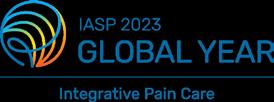


To download a copy of the locally produced poster and to access the IASP Fact Sheets, visit the Global Year page of the APS website. More information can be found on IASP’s website.
Along with our regular collaborators:
• New Zealand Pain Society

• Faculty of Pain Medicine, ANZCA
we encourage you to help raise awareness of this important topic.
If you conduct an event to raise awareness of Integrative Pain Care, please send us a report and photos to share with your fellow members.
19 Australian Pain Society Newsletter Volume 43, Issue 1, February 2023 Global Year
2023
Women in Health Eligible for Leadership Development Scholarships
Women in health can now apply for a leadership development scholarship from Women & Leadership Australia. Providing world-class leadership development programs for women at all stages of their careers, Women & Leadership Australia brings together the latest in leadership theory and practice with a focus on applied learning, building networks and a flexible, part-time delivery to fit in with your schedule.
Scholarships are now available through Women & Leadership Australia to encourage more women to enhance their impact at work and beyond, and to support the development of women leaders at all levels.

Partial scholarships of $1,000-$5,000 will support participation in one of four courses designed for women in non-leadership roles through to senior leaders.
Applications close Friday 17 March 2023 unless allocated prior. Find out more here.
pain clinic
Thank you to APS member Karime Mescouto and colleagues Rebecca E Olson, Nathalia Costa, Kerrie Evans, Miriam Dillon, Niahm Jensen, Kelly Walsh, Megan Weier, Kathryn Lonergan, Paul Hodges, Jenny Setchell for sharing the following recent publication.

Article first published online: 26 November, 2022
Journal Reference: Mescouto K, Olson RE, Costa N, et al. ‘Engaging on a slightly more human level’: A qualitative study exploring the care of individuals with back pain in a multidisciplinary pain clinic. Health. 2022;0(0).
DOI: https://doi.org/10.1177/13634593221127817
Abstract
Introduction
Chronic low back pain is characterised by multiple and overlapping biological, psychological, social and broader dimensions, affecting individuals’ lives. Multidisciplinary pain services have been considered optimal settings to account for the multidimensionality of chronic low back pain but have largely focused on cognitive and behavioural aspects of individuals’ pain. Social dimensions are usually underexplored, considered outside or beyond healthcare professionals’ scope of practice. Our aim in this paper is to explore how a pain service’s practices bring to the fore the social dimensions of individuals living with low back pain (LBP).
Design
Qualitative study.
Setting
Public funded multidisciplinary pain service in Australia.
Subjects
Participants included 25 individuals with low back pain and 24 clinicians from various specialities.
Methods
We analysed 32 ethnographic observations and four group exchanges with the service’s clinicians
using Annemarie Mol’s concept of multiplicity as a theoretical driver.
Results
Our findings suggest that particular practices, encounters and material environments (buildings, furniture, institutions) produced multiple enactments of an individual with low back pain. First, individuals are enacted as ‘the person’ when multiple social aspects of a person’s life with pain are brought to light in practice, such as through personal context and relationships and interactions with institutions and healthcare providers. Second, we show how individuals with low back pain are enacted as ‘the patient’ through expectations of compliance with rules and habits and individualistic approaches to care. These practices contravene the social dimensions of living with low back pain. We consider ‘the person’ individuals within their social context, while ‘the patient’ is an identity/role produced at the pain service. Finally, the enactment of ‘the patient-person’ provides examples and opportunities where connection between ‘the person’ and ‘the patient’ was possible by connecting beyond patient-clinician usual roles, shifting power in interactions, through adaptation of rules and habits, and assistance outside the pain service. ‘The patient-person’ enactment offers an opening into revised practices for caring for individuals with LBP.
Conclusions
We therefore argue that different practices enact different versions of an individual with low back pain in pain services, and that engagement with individuals’ social contexts can be part of a service’s agenda.
Declaration
The author(s) disclosed receipt of the following financial support for the research, authorship, and/or publication of this article: This work was supported by National Health and Medical Research Council of Australia Fellowships [JS: APP1157199 and PWH: APP1102905], and an Early Career Researcher grant.
21 20 Australian Pain Society Newsletter Volume 43, Issue 1, February 2023 Australian Pain Society Newsletter Volume 43, Issue 1, February 2023 Recent Publications ARA Abstract Submissions / WLA Scholarship
‘Engaging on a slightly more human level’: A qualitative study exploring the care of individuals with back pain in a multidisciplinary
Key Learning Statements for Persistent Pain Education: An Iterative Analysis of Consumer, Clinician and Researcher Perspectives and Development of Public Messaging
Thank you to APS members Hayley Leake, Amelia Mardon, Tasha Stanton, Daniel Harvie, Emma Karran, Dianne Wilson, John Booth, Kal Fried, Chris Hayes, Amanda Simister, Lorimer Moseley AO, Carolyn Berryman and colleagues, David Butler, Trevor Barker, Pene Wood, Lissanthea Taylor, Melanie Macoun and for sharing the following recent publication.
Article first published online: August 03, 2022
Journal Reference: The Journal of Pain
DOI: 10.1016/j.jpain.2022.07.008
Abstract
Background
There has been a gradual shift in the content and delivery of pain education over the last decade. This shift reflects an adjustment in line with scientific discovery in pain and educational sciences, and in line with consumer perspectives.
Objective
This paper describes a decade-long process of exploring consumer perspectives on pain science education concepts to inform clinician-derived educational updates.
Design
Part 1 is a series of three cross-sectional surveys that were designed by clinicians and researchers, to investigate consumer perspectives on pain science education content. Part 2 is a description of the public health resources that were informed by the results of the surveys in Part 1.
Subjects
Three cohorts of consumers were recruited, from people who presented for care for a persistent pain condition and were treated with a pain science education informed approach between 2011 to 2017, and self-identified as ‘improved’.
Methods
Eligible consumers were invited to provide anonymous feedback via an online survey, about their current health status and pain journey experience 6, 12 or 18 months after initial assessment. Responses to the open-ended questions were analysed using an inductive content analysis approach to devise a list of key learning statements. Subsequent cohorts rated the perceived importance of each statement to them on a 6-point Likert scale.
Results
Results of the surveys from three cohorts of consumers (n=210) that reported improvement were used to generate iterative versions of ‘Key Learning Statements’. Early iteration of these Key Learning Statements was used to inform the development of Target Concepts and associated community-targeted pain education resources for use in public health and health professional workforce capacity building initiatives.
Conclusion
A decade-long, iterative consultative process led to the identification of eight Key Learning Statements, the development of nine Target Concepts, and the extension to Fact Sheets for public education about pain. Those fact sheets are available at www.painrevolution.org/factsheets. This process included consumer participation via consultation, and thus departed from the historical clinician-asexpert driven information approach of delivering education, to a process involving consumer input to develop modern pain education curricula.
Declaration
CB, ELK and GLM were supported by a Leadership Investigator grant from the National Health & Medical Research Council of Australia ((NHMRC) ID 1178444) to GLM. TRS was supported by a NHMRC Career Development Fellowship (ID 1141735).
DSH was supported by a NHMRC Early Career Research Fellowship (ID 1142929). AKM and HBL were supported by a Research Training Program domestic (RTPd) stipend as postgraduate students at the University of South Australia.
Physiotherapists’
study
Thank you to APS members Connor Gleadhill, Steven Kamper and colleagues Katarzyna Bolsewicz, Simon Davidson, Amanda Tutty, Emma Robson, Priscilla Viana Da Silva, Bruce Donald, Katherine Dooley, Joshua Manvell, Nicole Manvell, Andrew Delbridge & Christopher Williams for sharing the following recent publication.
Article first published online: 21 November 2022
Journal Reference: Gleadhill, C., Bolsewicz, K., Davidson, S.R.E. et al. Physiotherapists’ opinions, barriers, and enablers to providing evidence-based care: a mixed-methods study. BMC Health Serv Res 22, 1382 (2022).
DOI: https://doi.org/10.1186/s12913-022-08741-5
Abstract
Background
Physiotherapists deliver evidence-based guideline recommended treatments only half of the time to patients with musculoskeletal conditions. Physiotherapists’ behaviour in clinical practice are influenced by many cognitive, social, and environmental factors including time and financial pressures. Many initiatives aimed at improving physiotherapists’ uptake of evidence-based care have failed to appreciate the context involved in clinical decisions and clinical practice. Therefore, we aimed to describe: i) opinions toward evidence; ii) how evidence is accessed; iii) factors influencing evidence access; iv) factors influencing evidence application, for physiotherapists working in regional areas.
Design
A mixed-methods study with online survey and focus groups.
Setting
Regional Australia.
Subjects
We included registered physiotherapists in the survey and physiotherapists practising in regional New South Wales in the focus groups.
Methods
Quantitative and qualitative data were used to inform all research objectives. We used eight domains of the Transtheoretical Domains Framework to design survey questions. We analysed quantitative and qualitative data in parallel, then integrated both sources through by developing a matrix while considering the Transtheoretical Domains Framework domains to generate themes.
Results
Fifty-seven physiotherapists participated in the study (survey only n = 41; focus group only n = 8; both survey and focus group n = 8). Participants reported that evidence was important, but they also considered patient expectations, colleagues’ treatment choices, and business demands in clinical decision making. Physiotherapists reported they access evidence on average 30 minutes or less per week. Competing demands like business administration tasks are barriers to accessing evidence. Participants reported that patient expectations were a major barrier to applying evidence in practice. Environmental and systemic factors, like funding structures or incentives for evidence-based care, and social factors, like lacking or having a culture of accountability and mentorship, were reported as both barriers and enablers to evidence application.
Conclusions
This study provides context to physiotherapists’ opinion, access, and application of evidence in clinical practice. Physiotherapists’ provision of evidence-based care may be improved by enhancing structural support from workplaces to access and apply evidence and exploring
23 Australian Pain Society Newsletter Volume 43, Issue 1, February 2023 22 Australian Pain Society Newsletter Volume 43, Issue 1, February 2023 Recent Publications Recent Publications
opinions, barriers, and enablers to providing evidence-based care: a mixed-methods
discrepancies between physiotherapists’ perceptions of patient expectations and actual patient expectations.
Implications/Discussion
Implementation research is needed to improve the translation of pain research into practice. Previous research assessing barriers to evidence-based practice rarely uses rigorous behavioural theory that also captures the social and environmental (contextual) elements of care provision. We suggest some modifiable contextual elements of accessing and applying evidence for future implementation research.
Declaration
Connor Gleadhill has nothing to declare.
Have you had an article accepted for publication recently?
The Australian Pain Society (APS) is keen to share publications from our members with their colleagues via our eNewsletter. If you’ve had an article accepted or published recently, please contact our Assistant Editor Joanne Harmon via the APS Secretariat (aps@apsoc.org.au) with the title, authors, and reference (i.e., journal, volume, and DOI) of your article and request the submission template. We would love it if you also supply a short commentary (300 words max) to give our readers the gist of the article.
Benefits and harms of treatments for chronic non-specific low back pain without radiculopathy: Systematic review and meta-analysis
Thank you to APS member Stephanie Mathieson and colleagues Ron Feise, Rodger Kessler, Corey Witenko, Fabio Zaina, and Benjamin Brown for sharing the following recent publication.
Article first published online: 17 November, 2022
Journal Reference: The Spine Journal
DOI: https://doi.org/10.1016/j.spinee.2022.11.003
Abstract
Background
Currently, there are no published studies that compare non-pharmacological, pharmacological and invasive treatments for chronic low back pain in adults and provide summary statistics for benefits and harms. The aim of this review was to compare the benefits and harms of treatments for the management of chronic low back pain without radiculopathy and to report the findings in a format that facilitates direct comparison (Benefit-Harm Scale: level 1 to 7).
Design
Systematic review and meta-analysis.
Subjects
Adults with non-specific chronic low back pain, excluding radicular pain in any clinical setting.
Methods
This was a registered systematic review and metaanalysis of randomised controlled trials including trial registries, from electronic databases up to 23 May 2022. Interventions included non-pharmacological (acupuncture, spinal manipulation), pharmacological and invasive treatments compared to placebo. Best evidence criteria was used. Two independent reviewers conducted eligibility assessment, data extraction and quality appraisal. Outcomes were included the comparison of pain at immediate-term (≤2 weeks) and short-term (>2 weeks to ≤12 weeks)
and serious adverse events using the BenefitHarm Scale (level 1 to 7).
Results
The search retrieved 17,362 records. Three studies provided data on the benefits of interventions, and 30 provided data on harms. Studies included interventions of acupuncture (n=8); manipulation (n=2); pharmacological therapies (n=9), including NSAIDs and opioid analgesics; surgery (n=8); and epidural corticosteroid injections (n=3). Acupuncture (standardised mean difference (SMD) -0.51, 95%CI -0.88 to -0.14, n=1 trial, moderate quality of evidence, benefit rating of 3) and manipulation (SMD -0.39, 95%CI -0.56 to -0.21, n=2 trials, moderate quality of evidence, benefit rating of 5) were effective in reducing pain intensity compared to sham. The benefit of the other interventions was scored as uncertain due to not being effective, statistical heterogeneity preventing pooling of effect sizes, or the absence of relevant trials. The harms level warnings were at the lowest (e.g. indicating rarer risk of events) for acupuncture, spinal manipulation, NSAIDs, combination ingredient opioids, and steroid injections, while they were higher for single ingredient opioid analgesics (level 4) and surgery (level 6).
Conclusions
There is uncertainty about the benefits and harms of all the interventions reviewed due to the lack of trials conducted in patients with chronic non-specific low back pain without radiculopathy. From the limited trials conducted, nonpharmacological interventions of acupuncture and spinal manipulation provide safer benefits than pharmacological or invasive interventions. However, more research is needed. There were high harms ratings for opioids and surgery.
Declaration
The authors have no competing interests to declare.
Editor’s Note 25 24 Recent Publications Australian Pain Society Newsletter Volume 43, Issue 1, February 2023 Australian Pain Society Newsletter Volume 43, Issue 1, February 2023 ASM 2022 Recent Publications
Thank you to APS members Edel O’Hagan, Aidan Cashin, Rodrigo Rizzo, Hayley Leake, Matthew Bagg, Benedict Wand, James McAuley and colleague Pauline Zahara for sharing the following recent publication.
Article first published online: 26 November, 2022
Journal Reference: MusculoskeletalCare.2022;1–9
DOI: https://doi.org/10.1002/msc.1715
Abstract
Introduction
Low back pain contributes to an increasing global health burden exacerbated by unsustained improvements from current treatments. There is a need to develop, and test interventions to maintain initial improvements from low back pain treatments. One option is to implement a booster intervention. This study aimed to develop and test the feasibility of implementing a booster intervention delivered remotely to supplement the benefits from a complex intervention for chronic low back pain.
Methods
This study was nested in the RESOLVE trial. The booster intervention was developed by an expert group, including a clinical psychologist, exercise physiologist and physiotherapists, and based on a motivational interviewing framework. We developed a conversational flow chart to support the clinician to guide participants towards achieving their pre-specified personal goals and future low back pain self-management. Participants with chronic low back pain who were aged over 18 years and fluent in English were recruited. The booster intervention was delivered in one session, remotely, by telephone. The intervention was considered feasible if: participants were able to be contacted or <3 contacts were necessary to arrange the booster session; there were sufficient willing participants
(< 15% of sample unwilling to participate); and participants and research clinicians reported a perceived benefit of > 7/10.
Results
Fifty participants with chronic non-specific low back pain were recruited to test the feasibility of implementing the booster intervention. Less than three contact attempts were necessary to arrange the booster session, only one participant declined to participate. Participants perceived the session to be beneficial; on a 0 to 10 scale of perceived benefit, the average score recorded was 8.3 (SD 2.0). Clinicians also reported a moderate perceived benefit to the participant; the average score recorded by clinicians was 6.3 (SD 1.6).
Conclusions
We developed a step by step, simple booster intervention that was perceived to be beneficial to participants with chronic low back pain. The booster can feasibly be delivered remotely following a complex intervention
Declaration
This research project did not receive any specific grant from funding agencies in the public, commercial, or not-for-profit sectors. EO and MKB were supported during this work by Australian Commonwealth Government Research Training Program Scholarships and Neuroscience Research Australia PhD Candidature Supplementary Scholarships. The RESOLVE trial was funded by the National Health and Medical Research Council of Australia (ID1087045).
A systematic review and meta-analysis
Thank you to APS members Matthew Jones, Mitchell Gibbs, John Booth and colleagues Adrian Ram and Jeanette Thom for sharing the following recent publication.
Article first published online: 1 December, 2022
Journal Reference: Clin J Pain. January 2023. 39(1): 41-52
DOI: https://doi.org/10.1097/ajp.0000000000001086
Abstract
Aims
The aim of our systematic review and meta-analysis was to determine whether changes in patientrelated pain knowledge after pain science education were associated with changes in outcomes (pain, disability, quality of life, pain catastrophising and kinesiophobia) in people with chronic pain.
Design
Systematic review and meta-analysis.
Methods
We searched six electronic databases and two clinical trial registries for studies where people with chronic pain received pain science education, either alone or combined with another intervention (e.g. exercise), and had their pain knowledge and clinical outcomes assessed before and after the intervention. We used random effects metaanalysis to quantify short-term (< 12 weeks) associations between changes in pain knowledge with changes in pain, kinesiophobia and pain catastrophising. Data for disability and quality of life were synthesised narratively. Risk of bias of the included studies was assessed using the Cochrane tool for nonrandomised studies and the certainty of the evidence was evaluated using the Grading of Recommendations Assessment, Development and Evaluation (GRADE) approach.
Results
We included 14 studies (n=1500 participants, 69% females) comprised of people with chronic low back pain, chronic neck pain, whiplash, fibromyalgia and widespread pain. Pain science
education was delivered as a standalone intervention in seven studies and was combined with other interventions (e.g. multidisciplinary care, exercise) in the remaining seven studies. All studies used the neurophysiology of pain questionnaire or its revised version to assess patients’ pain science knowledge.
Pain science education was effective at increasing patients’ knowledge (baseline: ~37% of questions answered correctly; post-intervention: ~70% of questions answered correctly). Metaanalysis showed no significant short-term association between change in pain knowledge with change in pain (r = -0.01, 95% CI [-0.14 to 0.13]), kinesiophobia (r = -0.02, 95% CI [-0.27 to 0.24]) or pain catastrophising (r = -0.03, 95% CI [-0.18 to 0.11]). Regarding long-term outcomes, one study found a moderate and significant negative association between change in pain knowledge with change in pain catastrophising at 6 months (r = -0.23, 95% CI [-0.30 to -0.16]) and 12 months (r = -0.21, 95% CI [-0.28 to -0.13]) (i.e., more knowledge, less catastrophising). Narrative synthesis did not reveal any significant associations between change in knowledge with change in disability or quality of life. Risk of bias for the included studies was moderate to serious and the certainty of evidence was very low to low certainty, meaning the estimated effects may be different to the true or real effect.
Conclusions
Our systematic review did not find any significant short-term associations between changes in pain science knowledge, as measured using the neurophysiology of pain questionnaire, with changes in clinical outcomes in people with chronic pain. We contend that a change in pain knowledge per se is less important than what happens because of the change in knowledge, such as increased engagement with other active treatments because of reduced threat/greater patient ‘safety’.
Declaration Matthew Jones has no conflict of interest, financial or otherwise, to be disclosed.
27 26 Australian Pain Society Newsletter Volume 43, Issue 1, February 2023 Australian Pain Society Newsletter Volume 43, Issue 1, February 2023 Recent Publications Recent Publications
Development of a booster intervention for graded sensorimotor retraining (RESOLVE) in people with persistent low back pain: a nested, randomised, feasibility trial.
Are improvements in pain neurophysiology knowledge following pain science education associated with improved outcomes in people with chronic pain?
Vital reference for both Residential and Community Aged Care settings.

Pain in Residential Aged Care Facilities: Management Strategies

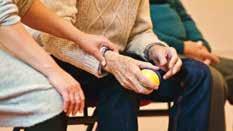
2nd Edition
The gold standard in Pain Management for Older People is now available in eBook format!

In this edition:
Chapter 1: About Pain
Chapter 2: Identi cation and assessment of pain in aged care residents


Chapter 3: Beyond medication: psychological and educational approaches to pain management
Chapter 4: Movement and physical activity

Chapter 5: Complementary approaches to pain

Chapter 6: Pharmacological treatments
Chapter 7: Dementia and cognitive impairment: special considerations

Chapter 8: Pain at the end of life
Chapter 9: Pain and nutrition
Chapter 10: Quality and systems issues
29 28 Australian Pain Society Newsletter Volume 43, Issue 1, February 2023 Australian Pain Society Newsletter Volume 43, Issue 1, February 2023 Events
PURCHASE YOUR COPY NOW FROM: books2read.com/painRACF2
BUY NOW $39.99 AUD 2023 AUSTRALIAN PAIN SOCIETY 43RD ANNUAL SCIENTIFIC MEETING 2 - 5 April 2023 National Convention Centre Canberra, ACT Expressions of interest online at www.dcconferences.com.au/aps2023 Join us online #auspainsoc
NEW eBook!






31 30 Events Australian Pain Society Newsletter Volume 43, Issue 1, February 2023 Australian Pain Society Newsletter Volume 43, Issue 1, February 2023 Events
NEW!
> APS Older Person in Pain Multidisciplinary Pain Management Education videos are now available for FREE via the Members Only portal, log in here: https://www.apsoc.org.au/ Login.aspx
Other items of interest for our members:
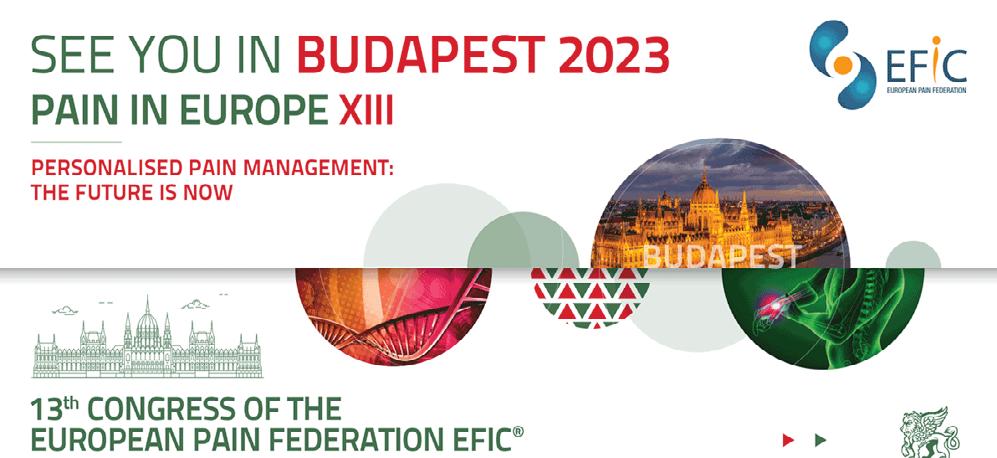
> Latest opioid data from the Australian Bureau of Statistics: Opioid induced deaths in Australia. https://www.abs.gov.au/articles/ opioid-induced-deaths-australia
> Australia’s annual overdose report 2019 from the Pennington institute : http://www. penington.org.au/australias-annual-overdosereport-2019/
> The Third Australian Atlas of Healthcare Variation: This series explores how healthcare use in Australia varies depending on where people live. It investigates reasons for variation that may be unwarranted, and provides specific achievable actions to reduce unwarranted variation. https://www.safetyandquality.gov.au/atlas
> Painaustralia eNewsletter latest issue, available online at http://www.painaustralia. org.au/media/enews

> ePPOC: electronic Persistent Pain Outcomes Collaboration: The electronic Persistent Pain Outcomes Collaboration (ePPOC) is an Australasian initiative that aims to improve the quality of care and outcomes for people who experience chronic pain. For more information about ePPOC, refer to the website: http://ahsri.uow.edu.au/eppoc/index. html
> PainHEALTH website: painHEALTH‘s aim is to help health consumers with musculoskeletal pain access reliable, evidence-based information and tips to assist in the comanagement of musculoskeletal pain. painHEALTH is an initiative of the Department of Health, Western Australia. http:// painhealth.csse.uwa.edu.au/
> Stanford University: CHOIR Collaborative Health Outcomes Information Registry https:// choir.stanford.edu/
> Opioid Podcasts for GPs: These podcasts are produced by David Outridge GP, and FAChAM Trainee as a project under the auspices of Dr Steven Kelly Staff Specialist in Addiction Medicine, Kullaroo Clinic Gosford. A 20 week series from the Hunter Postgraduate Medical Institute (University of Newcastle) : http:// www.gptraining.com.au/recent-podcasts
> Airing Pain: Pain resources via an online radio show produced by Pain Concern, a UK registered Charity: http://painconcern.org.uk/ airing-pain/
> Indigenous Resources: New webpage on the APS website aggregating Indigenous resources: https://www.apsoc.org.au/ Indigenous-Resources
> Opioids: Communications videos: https://www. nps.org.au/opioids-communication-videos
TGA
> Codeine information hub: https://www.tga.gov. au/news/news/codeine-information-hub
33 32 Australian Pain Society Newsletter Volume 43, Issue 1, February 2023 Australian Pain Society Newsletter Volume 43, Issue 1, February 2023 Events FYI
NSW Agency for Clinical Innovation resources:
> Brainman and Pain Tool Kit translations, SEP15: http://www.aci.health.nsw.gov.au/ chronic-pain/translated-resources
> Pain Management Resources: https:// aci.health.nsw.gov.au/networks/painmanagement/resources
> Quicksteps to Manage Chronic Pain in Primary Care: http://www.aci.health.nsw.gov. au/chronic-pain/health-professionals/quicksteps-to-manage-chronic-pain-in-primarycare
> Built into Quicksteps: “How to de-prescribe and wean opioids in general practice”: http:// www.aci.health.nsw.gov.au/chronic-pain/healthprofessionals/quick-steps-to-manage-chronicpain-in-primary-care/how_to_de-prescribe_and_ wean_opioids_in_general_practice
> A list of helpful apps for consumers and clinicians now available at: http://www.aci. health.nsw.gov.au/chronic-pain/healthprofessionals/management-of-chronic-pain
> Chronic Pain in the ED: https://www.aci. health.nsw.gov.au/networks/eci/clinical/ clinical-resources/clinical-tools/painmanagement/chronic-pain-in-the-ed
APS Membership Survey 2023
In order to align the invaluable feedback from our membership surveys to the APS President changeover cycle, we are asking members to complete a survey with their 2023 membership renewal.
The survey results will assist the new APS leadership team to shape the strategic goals of our society.
New Members
New Members as at 24 January 2023:
Ms Chelsea Dutkiewicz
Miss Emma Gibbons
Pharmacy
Physiotherapy
Mrs Alexia Greaves Nursing
Dr Louise Jeynes Anaesthesia
Mrs Jessica Kneale Nursing
Dr Chanida Limpatiyagorn Anaesthesia
Dr Yvette McKellar Anaesthesia
Ms Samantha Millard Science Research
Ms Meg Odgers Psychology
Ms Katelyn Phinn Pharmacy
Ms Pauline Slater Physiotherapy
Mrs Nadine Smith Physiotherapy
Mr Junsheng Leslie Teo Exercise Physiologist
Miss Mirjana Valdes
Anaesthesia
Mrs Sasha Wray Occupational Therapy
We are also pleased to announce the following prizes (two in total) for the 2023 membership survey. Complete the survey by 10FEB23 and enter the prize draw to win:
1 of 2
Gala Dinner Tickets on Tuesday, 4 April 2023 at the Canberra conference!
Thank you for your continued support and membership of the APS.
35 34 Australian Pain Society Newsletter Volume 43, Issue 1, February 2023 Australian Pain Society Newsletter Volume 43, Issue 1, February 2023 ASM 2022 APS Membership Survey FYI / New Members
Member Survey
APS Membership Renewals 2023
Renewal notices for 2023 have been sent by email to members, check your inbox!
Thank you for your continued support and membership of the APS.
Please note:
1. We understand that circumstances change, so each year we ask you to select your appropriate level of membership.
2. This system of self-reporting subscription levels was implemented in 2009 for the benefit and fairness of all members.
3. There has been a small increase applied to the 2023 membership fees.
Please refer to the rates below for your 2023 membership fee:
a. Regular A $120 (was $110)
b. Regular B $230 (was $205)
c. Regular C $370 (was $310)
d. Retired $65 Concessional Rate
e. Student $65 Concessional Rate
Before renewing, please ensure you review and update your member profile online.
Payments can be made by Credit Card, BPAY, or Cheque.
Did you know that the Australian Pain Society is a registered charity with ACNC? Your donation will help the Society to promote the prevention and control of diseases in human beings associated with pain.
All donations of $2 or more to APS are tax-deductible.
Calendar of Events
23-26 March 2023
New Zealand Pain Society
NZPS 2023 “Designing a Better Future”
The Cordis Hotel, Auckland, NZ https://www.nzps2023.nz/
2-5 April 2023
Australian Pain Society
APS 2023 43rd Annual Scientific Meeting
In the IASP Global Year for Integrative Pain Care
National Convention Centre, Canberra, ACT
https://www.dcconferences.com.au/aps2023/
5 May 2023
Australian and New Zealand College of Anaesthetists & Faculty of Pain Medicine
2023 FPM Symposium - Moving Forward
International Convention Centre (ICC), Sydney, NSW
https://www.anzca.edu.au/events-courses/ events/major-events/fpm-national-events/2023faculty-of-pain-medicine-symposium-(1)
5-9 May 2023
Australian and New Zealand College of Anaesthetists (ANZCA)
ANZCA 2023 Annual Scientific Meeting - Be connected
International Convention Centre (ICC), Sydney, NSW
https://www.anzca.edu.au/events-courses/ events/major-events/2023-anzca-asm
6-7 May 2023
Exercise & Sports Science Australia (ESSA)
2023 ESSA - Innovation & Practice Forum
Novotel Sunshine Coast Resort, Sunshine Coast Twin Waters, QLD
https://www.essaforum.com.au/
6-9 May 2023
Australian Rheumatology Association (ARA) ARA ASM 2023
Hotel Grand Chancellor, Hobart, TAS
https://www.araconference.com/
21-23 June 2023
Occupational Therapy Australia (OTA)
OTAUS2023 - 30th National Conference & Exhibition
Cairns Convention Centre, Cairns, QLD https://www.otausevents.com.au/otaus2023/
11-13 August 2023
Neuromodulation Society of Australia and New Zealand
NSANZ 2023 16th Annual Scientific Meeting - Neuromodulation: From Niche Practice to Mainstream Medicine
Sofitel Brisbane Central, Brisbane, QLD
http://www.dcconferences.com.au/nsanz2023
31 August-2 November 2023
Interational Neuromodulation Society (INS) 3rd Joint Congress of the INS European Chapters - Addressing Tomorrow’s Challenges Together! Congress Centre Hamburg, Germany
https://e-ins.org/
7-9 September 2023
International Association for the Study of Pain (IASP)
NeuPSIG 2023 International Congress on Neurpathic Pain
The Lisbon Congress Centre, Lisbon, Portugal https://neupsig.joyn-us.app/
37 Australian Pain Society Newsletter Volume 43, Issue 1, February 2023 36 Australian Pain Society Newsletter Volume 43, Issue 1, February 2023 Membership Renewals Calendar of Events
Vision, Purpose & Priorities
10-13 September 2023
Rehabilitation Medicine Society of Australia & New Zealand
RMSANZ2023 6th Annual Scientific MeetingDiversity and Leadership
Hotel Grand Chancellor, Hobart, TAS https://www.dcconferences.com.au/rmsanz2023/ home
20-23 September 2023
European Pain Federation EFIC 13th Congress
Personalised Pain Management: The future is now Budapest, Hungary https://europeanpainfederation.eu/efic2023/
1-4 October 2023
Interational Association for the Study of Pain (IASP)
The International Symposium on Pediatric Pain 2023 (ISPP 2023)
Halifax Convention Centre, Halifax, Canada https://ispp.joyn-us.app/
Vision:
All people will have optimal pain management throughout life.
Purpose:
The Australian Pain Society is a multidisciplinary association whose purpose is to advance pain management through education, research, and advocacy for transformational improvements in clinical care.
Priorities:
In order to achieve our purpose, the Australian Pain Society will provide:
> Membership
> Research
> Education
> Services and resources
> Good governance and operations
> Advocacy
39 38 Australian Pain Society Newsletter Volume 43, Issue 1, February 2023 Australian Pain Society Newsletter Volume 43, Issue 1, February 2023 Calendar of Events Vision, Purpose & Priorities
Directors
President:
Ms Trudy Maunsell
Acute Pain Service
Princess Alexandra Hospital
Woolloongabba QLD 4102
Tel: 07 3176 5547 Fax: 07 3176 5102
President-Elect: Mrs Joyce McSwan
Gold Coast Primary Health Network
Persistent Pain Program, QLD and PainWISE
Tel: 0412 327 795 Fax: 07 3539 9801
Secretary: Mrs Dinah Spratt
Physiotas Physiotherapy
Shearwater TAS 7307
Tel: 03 6428 7500 Fax: 03 6424 7811
Treasurer Dr Laura Prendergast
Pain Service, Northern Health
Broadmeadows VIC 3047
Tel: 03 8345 5166 Fax: N/A
Work days Mon & Thu
ACT Director: Dr Andrew Watson

Calvary Hospital
Canberra ACT 2617
Tel: 02 6201 6352 Fax: N/A

NSW Director: TBA
Office Bearers
NT Director:
Adjunct A/Prof Cindy Wall
Clinical Psychology Assessment & Consultancy
Fannie Bay NT 0820
Tel: 0488 993 210 Fax: 08 6266 3777
QLD Director: Mrs Karalyn Huxhagen









KH Pharmacy Consulting
Mackay QLD 4740
Tel: 0418 185 972 Fax: 07 4805 6155
SA Director: Dr Michelle Harris

Royal Adelaide Hospital and Lyell McEwin Hospital
Adelaide SA
Email: michelle.harris2@sa.gov.au
TAS Director:
Ms Bernadette Smith
Psychology Plus
South Burnie TAS
Tel: 03 6431 9959 Fax: 03 6431 9950
VIC Director:
Dr Esther Dube

Austin Health
Heidelberg VIC 3084
Tel: 03 9989 1676 Fax: N/A
WA Director:
Ms Jacintha Bell
Lifeworks Occupational Therapy
Subiaco WA 6008
Tel: 0451 178 880 Fax: 08 6323 3329
Immediate Past President:
A/Prof Anne Burke
Central Adelaide Local Health Network
Royal Adelaide Hospital
Adelaide SA 5000
Tel: 08 7074 2835 Fax: 08 7074 6247
SPC Chair:
Professor Kevin Keay


Department of Anatomy
University of Sydney
Sydney NSW 2006
Tel: 02 9351 4132 Fax: 02 9351 2817
IASP Liaison:
Professor Michele Sterling



Recovery Injury Research Centre
University of Queensland
Herston QLD 4092
Tel: 07 3346 4793
Communications Coordinator:
Ms Trudy Maunsell
Acute Pain Service
Princess Alexandra Hospital
Woolloongabba QLD 4102
Tel: 07 3176 5547 Fax: 07 3176 5102
Newsletter Editor:
Dr Lincoln Tracy
School of Public Health and Preventive Medicine
Monash University
Melbourne VIC 3004
Tel: 03 9903 0288
Newsletter Assistant Editor: Dr Joanne Harmon
School of Clinical and Health Sciences
University of South Australia
Adelaide SA 5000
Tel: 08 8302 1442
Scholarship/Grant Selection
Subcommittee Chair: Dr Michael Farrell

Retired VIC Secretariat:
DC Conference & Association
Management Pty Ltd
PO Box 637
North Sydney, NSW 2059
Tel: 02 9016 4343
Email: aps@apsoc.org.au
Website: apsoc.org.au
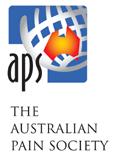
41 40 Australian Pain Society Newsletter Volume 43, Issue 1, February 2023 Vision, Purpose & Priorities Office Bearers Australian Pain Society Newsletter Volume 43, Issue 1, February 2023
 Joanne Harmon
Joanne Harmon

































































